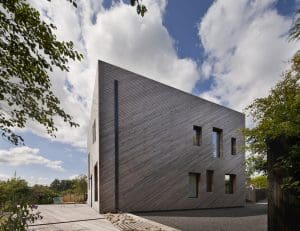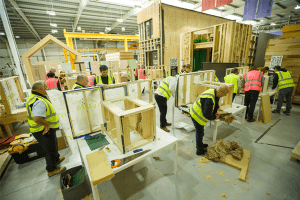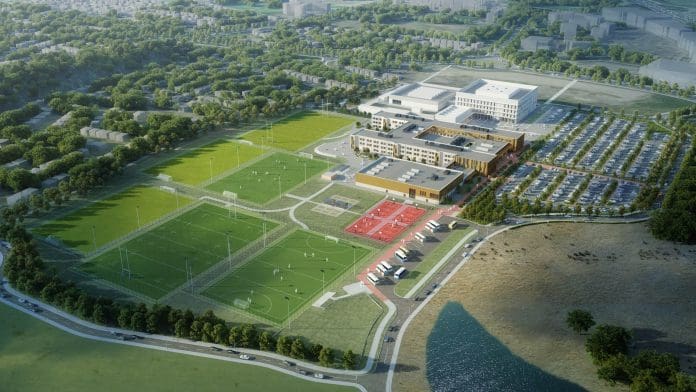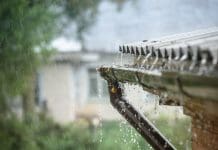Sarah Lewis, research and policy director at the Passivhaus Trust, discusses the recent UK Passivhaus Conference, which explored Scotland’s move to establish an equivalent to the Passivhaus standard for all newly built housing
The theme of the 2023 UK Passivhaus Conference in Edinburgh in October was “Scotland leads the way”. Scotland is undoubtedly leading the way in the UK – and the world – with its commitment to delivering comfortable, affordable and low-carbon housing.
In January 2023, the Scottish Government announced plans to introduce new minimum environmental design standards for all newly built housing to meet a “Scottish equivalent to the Passivhaus standard”.
Patrick Harvie, MSP, minister for zero carbon buildings, active travel and tenants’ rights, gave an update on how the policy is developing in his keynote speech at the UK Passivhaus Conference in Edinburgh on 17 October.
A cross-industry working group is currently working through the policy details, with a thorough consultation on the proposals due to begin in 2024.
‘The Passivhaus standard encourages the design and construction of low energy buildings’
Patrick Harvie said: “I am very pleased that Scotland is hosting this year’s UK Passivhaus conference, reflecting the leadership shown through our intent to introduce a Scottish equivalent of the Passivhaus standard.
“Improving the energy performance of our new homes and buildings is essential to cut overall energy use and help end our reliance on fossil fuels, which exposes everyone to volatile prices.
“The Passivhaus standard encourages the design and construction of low-energy buildings, which complements commitments already made in the Bute House Agreement. This is about delivering high quality, low energy and healthy buildings for people to live in that are built to the standards to which they are designed.”
Implementing the Passivhaus policy
The fine details of what the Scottish equivalent of Passivhaus policy will look like are still being developed and prepared before the consultation. The conference examined the practical and policy aspects of scaling up a Passivhaus equivalent standard in Scotland, with discussions on standards, tools, certification, and expanding Passivhaus training and the supply chain.
Ideas for how certification and quality assurance could be achieved for the Scottish Passivhaus equivalent were explored, including the role that existing Scottish Section 6 Certifiers might play. Over 30% of Scottish Section 6 Certifiers already have Passivhaus training or experience.
What training is available to implement the new standard?
The need to upskill the wider Scottish construction industry in Passivhaus at scale was explored at the conference.
Scotland already has an outstanding training resource at BE-ST (Built Environment – Smarter Transformation), just south of Glasgow.
BE-ST offers Scotland’s first national Passivhaus, retrofit and fabric first training programme and is on a mission to accelerate the built environment’s transition to zero carbon emissions. The Passivhaus Trust has a strategic partnership with BE-ST to support delivering its Passivhaus training.
BE-ST offers a range of training courses, including its Low Carbon Learning programme, which provides Passivhaus, retrofit and fabric-first training funded by the Scottish Funding Council and Skills Development Scotland through the Transition Training Fund.
To date, BE-ST’s Low Carbon Learning programme has supported 3,000+ individuals through Passivhaus standards and retrofit training.

What Passivhaus projects are underway in Scotland?
The conference showcased Passivhaus projects across Scotland, from Fife Council’s super-sized 23,000m2 Dunfermline Learning Campus to Midlothian Council’s ambitious social housing programme delivering 200+ Passivhaus council homes.
The conference also featured Scotland’s first Passivhaus school, Riverside Primary School for Perth & Kinross Council, and the City of Edinburgh Council’s Passivhaus schools’ programme.
It is estimated that there are 35 Passivhaus schools currently underway or in the pipeline in Scotland.
An innovative funding mechanism from the Scottish Futures Trust has encouraged the building of schools to the Passivhaus standard in Scotland. Projects receiving funding must meet a very clear energy target, and funding may be reduced based on any performance gap post-completion.

Eliminating the energy performance gap
The Passivhaus standard effectively eliminates the performance gap, de-risking the securing of funding. It has been impressive how swiftly the industry, supply chain and clients have adjusted to delivering to the Passivhaus standard in the education sector.
The Passivhaus Trust is actively engaging with the Scottish construction industry to help it scale up to deliver the Scottish Government’s ambition for a Scottish equivalent to the Passivhaus standard.
Find more Scottish Passivhaus projects here.
Sarah Lewis
Research and policy director
Passivhaus Trust
Tel: +44 (0)333 050 8271

















